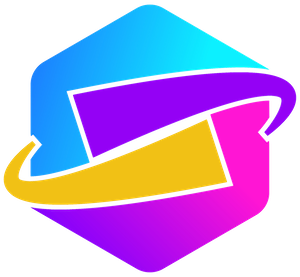Blockchain technology is often viewed as a double-edged sword—offering immense potential for innovation while simultaneously presenting a host of challenges that can deter participation. While early adopters and tech-savvy users have found ways to navigate this immersive landscape, the majority still find themselves facing hurdles such as high fees, complicated setups, and unintuitive interfaces. This is where Abstract Web3 comes into the picture. Having recently launched its mainnet, Abstract aims to bridge the gap between conventional online interactions (Web2) and the burgeoning, yet often opaque, domain of Web3.
The allure of blockchain lies in its capacity to decentralize and democratize technology. However, let’s face it: for most casual users, getting involved in Web3 often feels like entering a labyrinth. Abstract seeks to enhance this experience by focusing on user-friendliness, thereby making the benefits of blockchain technology accessible to a much wider audience.
Abstract is a project under the umbrella of Igloo Inc., a company already familiar in the NFT space through its popular Pudgy Penguins collection. The team behind Abstract comprises notable Web3 developers, including the likes of Cygaar and 0xbeans. These innovators recognized the barriers existing in the traditional blockchain ecosystem and set out to create a Layer 2 solution that simplifies access without sacrificing security or speed.
In June 2024, Igloo Inc. attracted considerable attention by securing an $11 million funding round led by Founders Fund, with substantial contributions from other investors. This capital influx underscores the interest and belief in Abstract’s capability to make blockchain mainstream. The founders have consciously targeted the challenges of crypto adoption—namely high fees and a steep learning curve—while simultaneously emphasizing the importance of cultural relevance in driving user engagement.
At its core, Abstract employs Zero-Knowledge (ZK) rollups, a technological advancement that allows multiple transactions to be bundled together into a single proof. This mechanism not only enhances throughput but also minimizes congestion and reduces transaction costs, addressing two of the major pain points associated with blockchain technology. Additionally, the use of the ZKsync Stack ensures that Abstract benefits from both speed and robust security features.
One of the standout technical aspects of Abstract is its Ethereum compatibility, allowing most Ethereum applications to migrate with minimal adjustments. Developers will find this particularly beneficial, as it opens up pathways to engage with new user bases without having to redesign their applications from the ground up.
Moreover, Abstract introduces account abstraction, allowing users to sign in with email addresses or social accounts—replacing the often cumbersome wallet recovery phrases with modern authentication methods. Such features exemplify Abstract’s commitment to lowering the barriers of entry, ultimately inviting new users into the blockchain ecosystem.
Central to Abstract’s offering is “The Portal,” an inclusive hub that houses over 100 curated on-chain applications. Designed with simplicity in mind, users can easily navigate through the portal without feeling overwhelmed by technical jargon. Apps can be sorted by categories, popularity, and user reviews, which ensures users can find appealing activities without the frustration of sifting through irrelevant listings.
In an age where user experience is paramount, Abstract borrows design principles from successful web platforms to create an intuitive interface. Effectively, The Portal aims to transform the perception of blockchain from that of a complex technological endeavor to a vibrant space filled with opportunities for entertainment, social engagement, and more.
Abstract not only focuses on user experience but also introduces an intuitive governance model dubbed “Panoramic Governance.” This structure incentivizes community participation by rewarding users for their voting and engagement with the platform. Users can vote on protocol adjustments or allocate resources to projects they find valuable, aligning the interests of developers and consumers.
The introduction of an “XP” system creates a relatable context within the blockchain space. As users participate in on-chain activities, they accumulate experience points, which can translate into tangible rewards or recognition, further enhancing user engagement and facilitating a sense of communal growth.
Abstract’s strategic approach targets diverse sectors, defining crypto spending through three distinct stages: discretionary, necessary, and essential. The platform initially focuses on entertainment, gaming, and social dApps, utilizing familiarity to draw users into the crypto ecosystem. By promoting community engagement through live streaming and interactive experiences, Abstract positions itself as a hub for cultural connection.
Partnerships with gaming apps like RealGo and Duper, along with integrations for NFT trading via Magic Eden, illustrate Abstract’s capability to seamlessly blend entertainment with blockchain functionality. Additionally, Abstract extends its reach into traditional loyalty programs and collectible card games, which could aid in integrating users into Web3 without the intimidating learning curve often associated with blockchain technology.
Entering the Abstract ecosystem is straightforward. A prospective user simply needs to visit The Portal, provide an email address, and a wallet is generated automatically. Once signed in, users can dive into exploring various applications—no technical knowledge is necessary.
As Abstract continues to develop, staying tuned for new features, partnerships, and community events will be crucial for users eager to maximize their involvement in this evolving ecosystem. By making the world of Web3 approachable and engaging, Abstract could very well streamline the integration of blockchain technology into the fabric of daily life.
Abstract Web3 is poised to redefine consumer engagement with blockchain, turning hurdles into stepping stones. Its combination of user-friendly interfaces, community-driven governance, and real-world applications provides a promising avenue for broadening blockchain’s appeal and accessibility.
















Leave a Reply